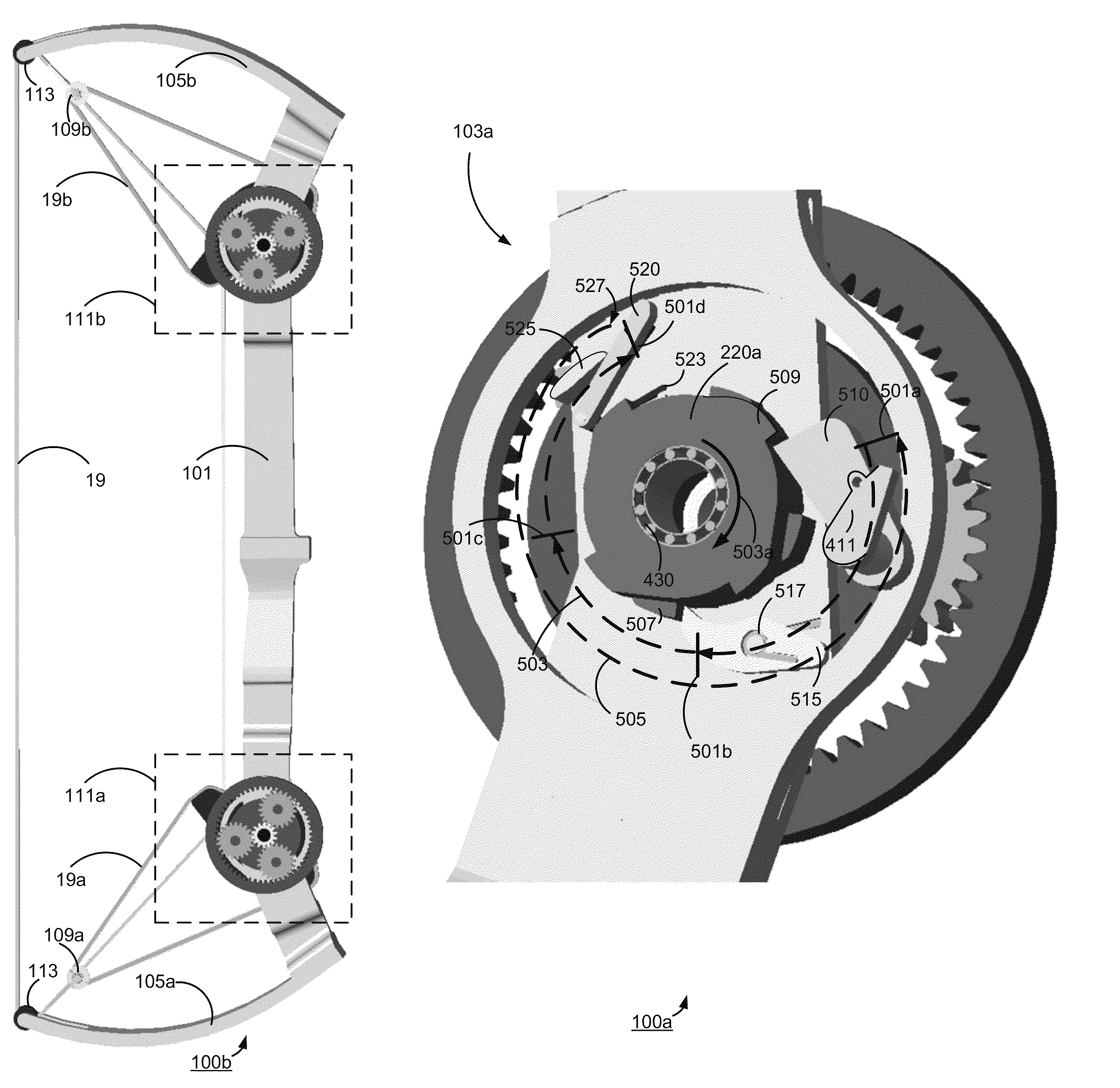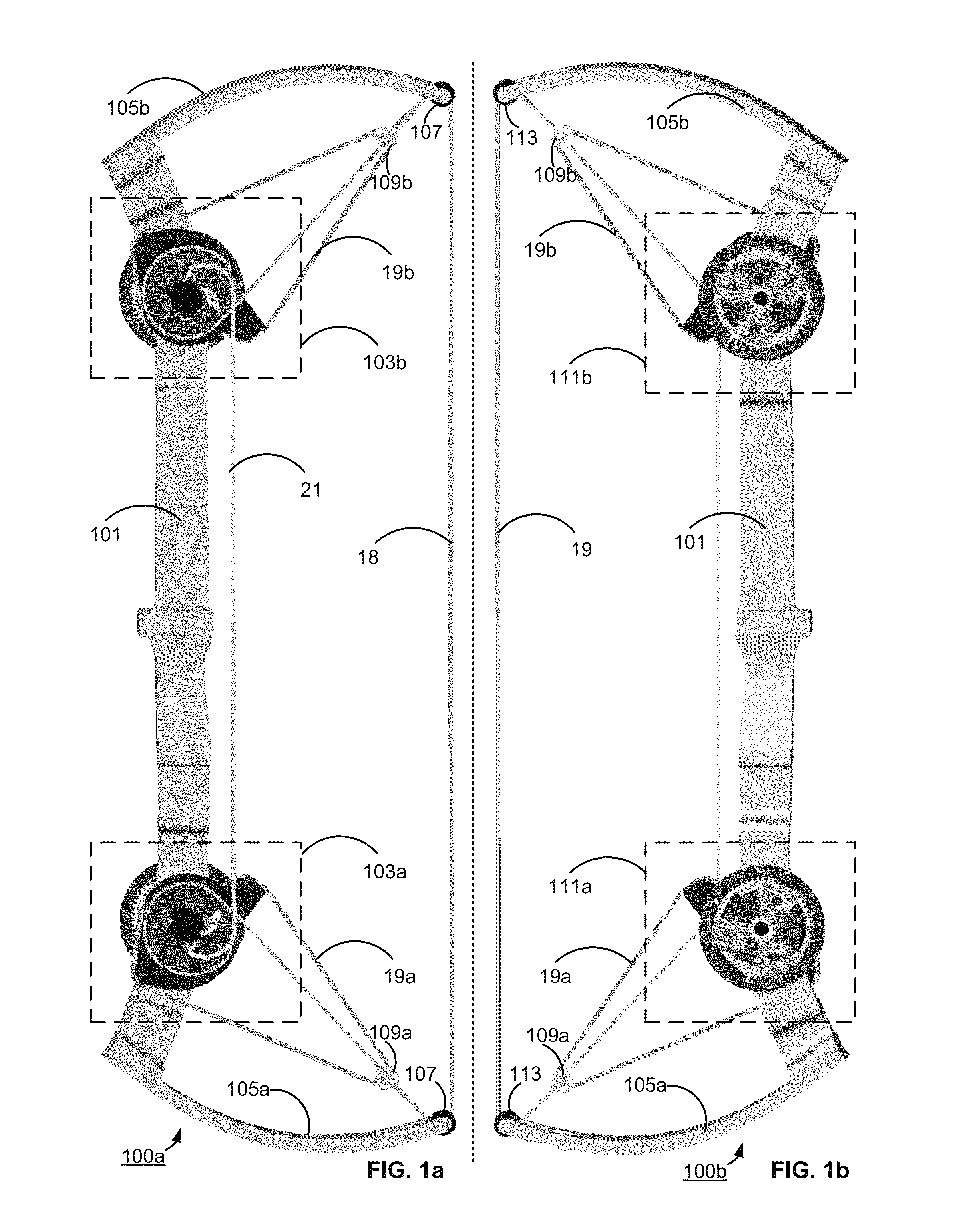Draw extending archery system
a drawing system and archery technology, applied in the field of archery, can solve the problems of limited user capability, limited draw force, single draw compound bows have their own limits, etc., and achieve the effects of shifting energy output limitations, greater arrow speed, and longer effective draw length
- Summary
- Abstract
- Description
- Claims
- Application Information
AI Technical Summary
Benefits of technology
Problems solved by technology
Method used
Image
Examples
example method
of Operation
[0040]FIG. 2a is a schematic diagram illustrating a bow, including a transmission, being drawn from a left-side view 100a, according to one embodiment. As shown, the lower 103a and upper 103b left-side transmission components include multiple components themselves. In some embodiments, configuration of the lower 103a transmission components is substantially mirrored across the axis of the draw 210 for configuring arrangement of the upper 103b transmission components.
[0041]The draw string 18 is coupled to lower 210a and upper 210b main cams and may be drawn 201 from a rest position to a fully drawn position. The main cams 210 are eccentric cams, pulleys or wheels which rotate around a central axis and house the draw string 18. As the main cams 210 rotate, they let out or reel in the draw string 18. FIG. 2a illustrates the directions of rotation of the respective main cams 210a, 210b during the draw 201.
[0042]The main cams 210 are operatively coupled to the respective driv...
PUM
 Login to View More
Login to View More Abstract
Description
Claims
Application Information
 Login to View More
Login to View More - R&D
- Intellectual Property
- Life Sciences
- Materials
- Tech Scout
- Unparalleled Data Quality
- Higher Quality Content
- 60% Fewer Hallucinations
Browse by: Latest US Patents, China's latest patents, Technical Efficacy Thesaurus, Application Domain, Technology Topic, Popular Technical Reports.
© 2025 PatSnap. All rights reserved.Legal|Privacy policy|Modern Slavery Act Transparency Statement|Sitemap|About US| Contact US: help@patsnap.com



